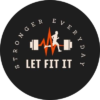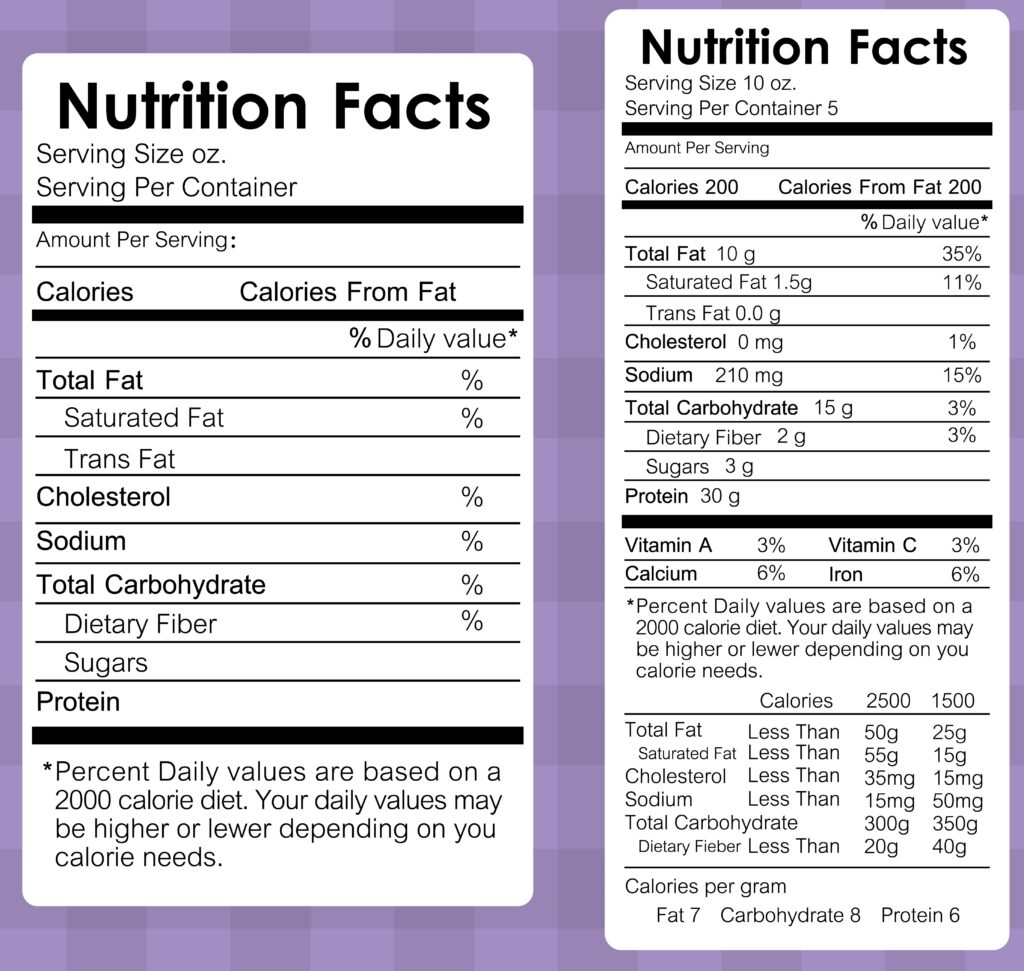Standing in a grocery store shouldn’t feel like a mental workout. But it often does. You’re surrounded by shelves packed with color, promises, buzzwords, and confidence. Everything claims to be better. Healthier. Smarter. Cleaner. And the more those claims shout at you, the harder it becomes to trust any of them, especially if you don’t know how to read nutrition labels.
That’s usually when people give up and grab what looks familiar.
Here’s the quiet truth:
The food doesn’t lie on the front. It performs there.
The truth sits on the back, unnoticed, unexcited, and brutally honest.
If you know how to read it, that little nutrition label in a supermarket shop is your most useful tool.
Learning how to read nutrition labels isn’t about becoming strict or obsessive. It’s about stopping the guessing game. Once you understand what you’re looking at, food decisions get simpler. Faster. Less emotional.
And no, you don’t need to read every single number every time. All you have to do is identify the important ones.
Why Most People Misunderstand Nutrition Labels
Most people think they read labels.
They glance at calories. Maybe sugar. Sometimes fat.
But reading a nutrition label properly is about relationships between numbers, not individual numbers on their own.
A food isn’t “bad” because it has fat.
It’s not “good” because it says organic.
It’s not automatically healthy because it’s low calorie.
Context matters.
Once you get the hang of reading nutrition labels, food stops feeling “good” or “bad” and starts feeling more… practical. You see how it actually affects you, not how it’s marketed.
That’s a big shift.
Serving Size: The Small Line That Controls Everything
Let’s slow this down, because serving size deserves more attention than it gets.
The serving size is the foundation of the entire nutrition label. Every number below it depends on that one line.
Calories. Sugar. Protein. Sodium. All of it.
And here’s where food companies quietly win:
They don’t decide how much people eat. They decide how much a serving is.
A cereal serving might be 30 grams.
Most people pour double that without thinking.
A bottle of juice might list two servings.
Most people drink the entire thing.
So when you’re learning how to read nutrition labels, ask this question every time:
“Is this a realistic amount?”
If not, mentally multiply the numbers.
No calculator needed. Just awareness.
No diet plan will ever be able to stop unintentional overeating as much as this one behavior.
Calories: Why Focusing Only on Them Backfires
Calories get blamed for everything.
Weight gain. Weight loss. Fat gain. Fat loss. Energy levels. Mood.
And yes, calories matter. But they’re not villains. They’re just units of energy.
What most people miss is this:
Math is not how your body reacts to food.
A 300-calorie cookie and a 300-calorie meal don’t feel the same. They don’t digest the same. They don’t affect hunger hormones the same way.
When reading nutrition labels, calories should answer one question only:
“How energy-dense is this food?”
Not:
- Is it good or bad
- Will it make me gain weight
- Should I feel guilty
Calories without nutrient context are incomplete information.
Protein: Why This Amount Silently Transforms Everything
On nutrition labels, protein is typically hidden in plain sight.
It’s there. It’s listed. And yet people overlook it constantly.
Protein matters because it:
- Keeps you full longer
- Supports muscle repair
- Stabilizes blood sugar
- Increases the thermic effect of food
The food with higher protein will nearly always satisfy you more when you compare two snacks with the same number of calories.
That’s not theory. That’s physiology.
Protein numbers don’t mean much until you look at them next to calories. You can eat the same amount of energy and still end up way more satisfied just because one option actually has some protein in it.
One keeps you going.
The other leaves you hunting for food an hour later.

Carbohydrates: The Section People Fear for the Wrong Reasons
Carbs aren’t the problem.
Unbalanced carbs are.
Because individuals primarily pay attention to the entire quantity, the carbohydrate portion on nutrition labels is frequently misinterpreted.
But the real story sits underneath.
Fiber: The Missing Piece
Fiber slows digestion. It improves gut health. It keeps you full.
This is where fiber matters more than people expect. Two foods can look similar carb-wise, but the one with fiber usually plays out very differently after you eat it.
More fiber usually means:
- Better digestion
- More stable energy
- Less overeating later
Sugars: Natural vs Added
Total and added sugars are now separated on nutrition labels, and this is more important than most people know.
Natural sugars in fruit come packaged with fiber and micronutrients.
Added sugars come packaged with… nothing useful.
If added sugar is one of the main contributors to total carbs, that food is probably designed for taste, not nourishment.
Added Sugars: Why the Name Doesn’t Always Say “Sugar”
This is where labels get sneaky.
Sugar isn’t always called sugar.
It appears as:
- Syrup
- Nectar
- Concentrate
- Malt
- Anything ending in “-ose”
A food can list multiple types of sugar separately so none of them appear first on the ingredient list, even though combined, sugar dominates the product.
When learning how to read nutrition labels, check:
- Grams of added sugar
- Placement of sweeteners in ingredients
If sugar appears multiple times, that’s intentional.
Fat: The Label Line That Was Unfairly Demonized
Fat spent years being blamed for health problems it didn’t cause on its own.
Nutrition labels list:
- Total fat
- Saturated fat
- Trans fat
Here’s the reality most people miss:
Just because something says “low-fat” doesn’t mean it’s good for you. Often, the missing fat is replaced with sugar or other stuff you might not want.
Trans fats should be avoided entirely. Saturated fats should be moderated. Unsaturated fats usually found in whole foods are beneficial.
When reading nutrition labels, fat quality matters more than fat quantity.
Sodium: The Number That Creeps Up Silently
Sodium doesn’t usually taste overwhelming.
That’s the problem.
It accumulates across the day.
A little in bread.
A little in sauce.
A little in snacks.
Suddenly, you’re far above the recommended intake of sodium without realizing it.
Nutrition labels make sodium easy to spot if you actually look.
Use % Daily Value as a guide:
- Under 5% = low
- Over 20% = high
You don’t need to eliminate sodium.
You just need to be aware of where it’s hiding.
Ingredients List: The Most Honest Part of the Package
If nutrition labels tell you how much, the ingredient list tells you what.
Ingredients are listed by weight. The first few matter the most.
When learning how to read nutrition labels, this list often tells you everything you need to know in seconds.
Short list? Usually good.
Long list filled with additives? Worth questioning.
A helpful mental filter:
“Would I buy this ingredient on its own?”
If not, ask why it’s there.
Micronutrients: The Quiet Health Builders
Calories keep you alive.
Micronutrients keep you healthy.
Nutrition labels often show:
- Calcium
- Iron
- Vitamin D
- Potassium
Foods that consistently provide these support:
- Bone strength
- Muscle contraction
- Oxygen transport
- Heart rhythm
They don’t make headlines. They make long-term health possible.
Using % Daily Value Without Overthinking Numbers
You don’t need to memorize targets.
% Daily Value exists to simplify decisions.
Low fiber? Not ideal.
High fiber? Good choice.
High sodium or added sugar? Eat less often.
That’s it.
When people understand how to read nutrition labels, they don’t calculate; they recognize patterns.
Comparing Similar Foods: Where Labels Actually Save You
This is where everything comes together.
Two yogurts.
Two protein bars.
Two frozen meals.
Front labels lie equally well.
But the nutrition labels won’t.
Compare:
- Serving size
- Added sugar
- Protein
- Fiber
- Sodium
- Ingredients
You’ll often find one option quietly outperforms the other without costing more.
Eating for Different Goals Using Nutrition Labels
Nutrition labels aren’t one-size-fits-all.
For Weight Loss
- Watch serving sizes
- Prioritize protein and fiber
- Limit added sugar
For Muscle Gain
- Look for higher protein per serving
- Ensure adequate calories
- Don’t fear healthy fats
For General Health
- Focus on whole ingredients
- Moderate sodium
- Balance macros
Learning how to read nutrition labels lets you adjust without rigid rules.
Turning Label Reading Into a Habit (Not a Chore)
At first, it feels slow.
Then it feels familiar.
Then it feels automatic.
You don’t need to read every label forever. You just need to read enough of them to recognize patterns.
Soon, you’ll know which brands overdo sugar.
Which snacks actually keep you full.
Which “healthy” foods are mostly marketing.
That’s when this skill really pays off.
Final Thoughts: Why This Skill Is Worth Learning
Learning how to read nutrition labels isn’t about restriction.
It’s about clarity.
When you stop trusting the front of the package and start reading the back, food stops being confusing. You don’t need strict diets. You don’t need fear-based rules.
You just need information and the ability to interpret it.
Flip the package over.
Read what’s actually there.
Then decide.
That’s control.
And that’s real nutrition literacy.


Super helpful! I’ll never look at food labels the same way again—especially those sneaky added sugars!
Pingback: Lower Chest Exercises: The Ultimate Guide to Defining Your Pecs
Pingback: Muscle Recovery: Your Ultimate Guide to Building Strength
Pingback: Vegetarian Bodybuilding: Build Muscle Without Meat